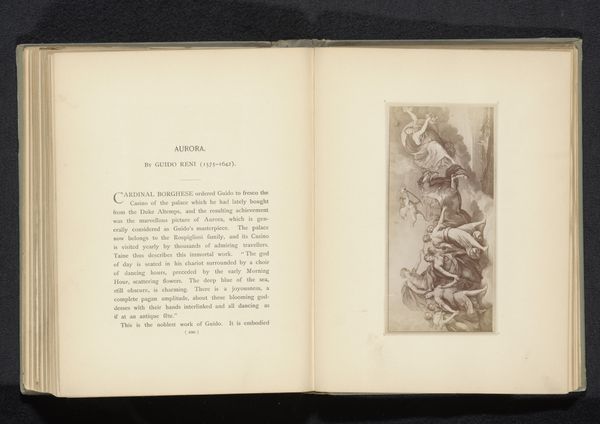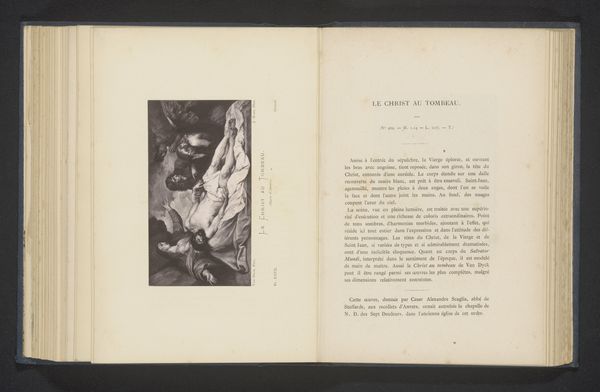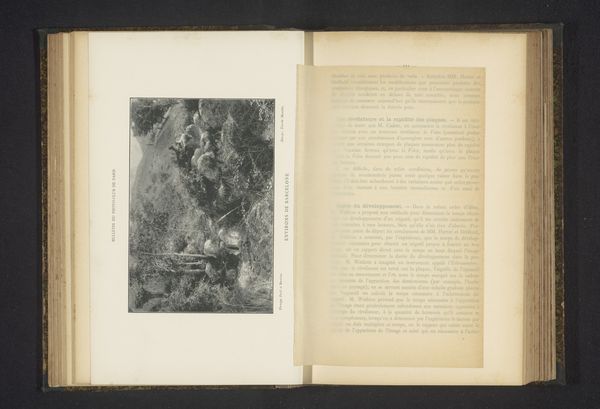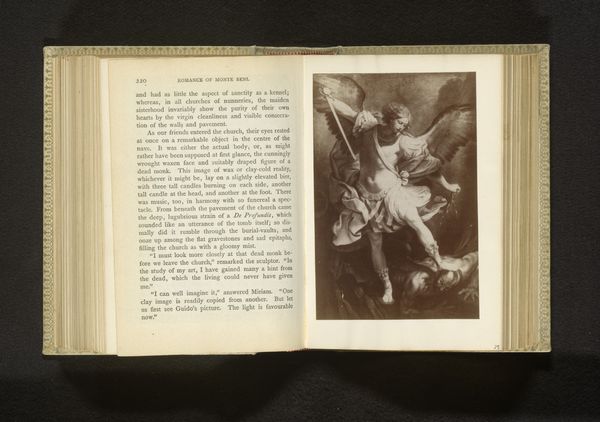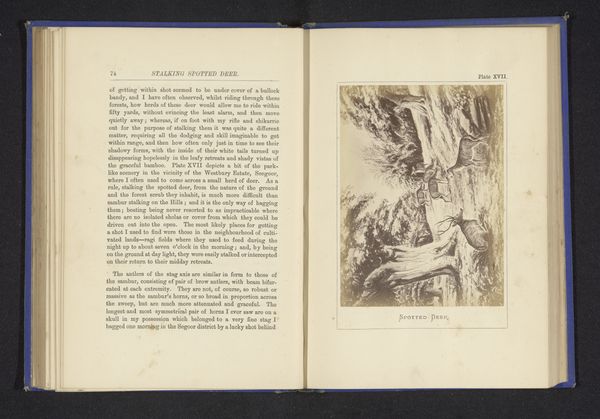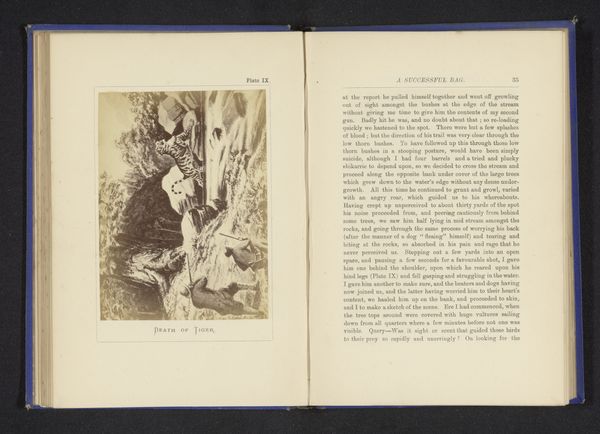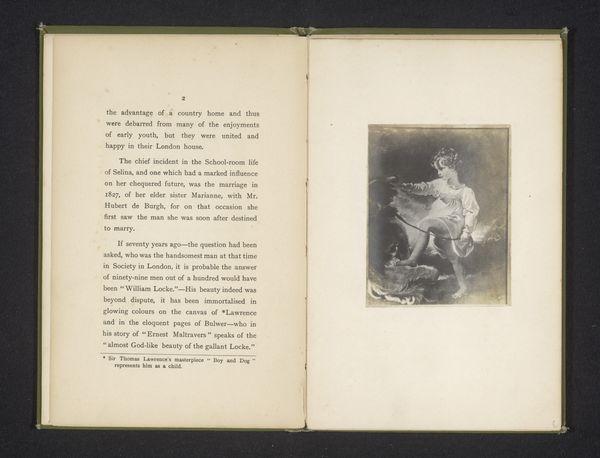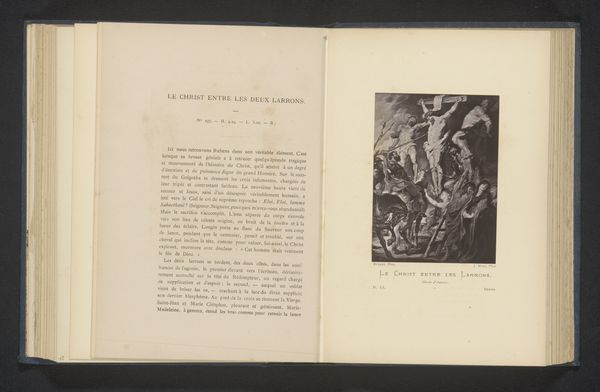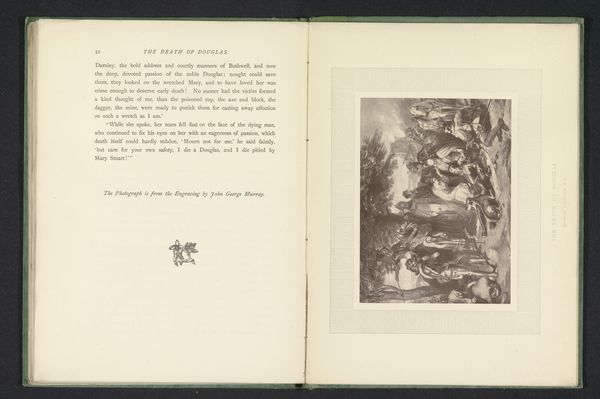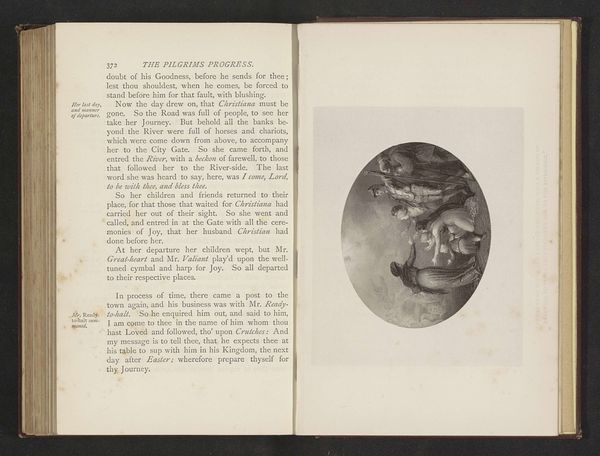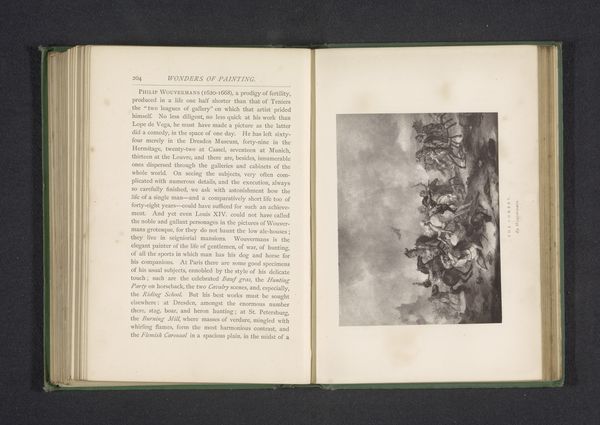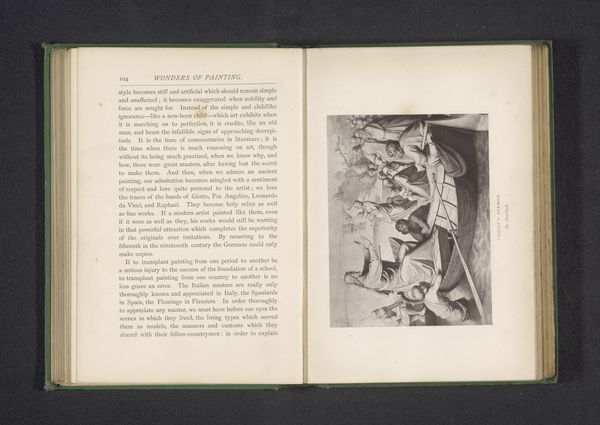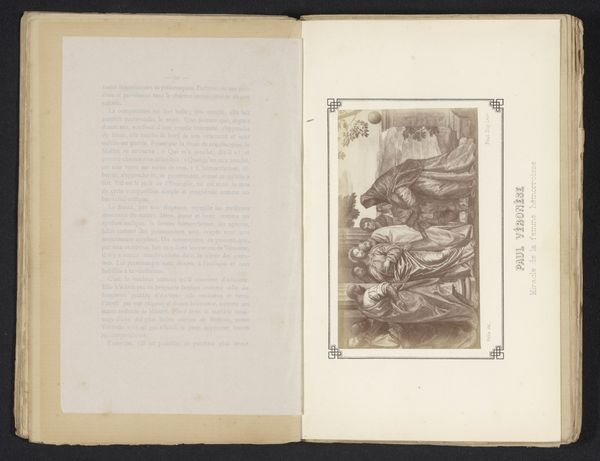
Fotoreproductie van een prent naar een schilderij, voorstellende de geboorte van Christus before 1887
0:00
0:00
print, paper, photography
#
aged paper
#
toned paper
#
homemade paper
# print
#
landscape
#
paper texture
#
paper
#
photography
#
personal sketchbook
#
fading type
#
thick font
#
golden font
#
historical font
#
columned text
Dimensions: height 124 mm, width 90 mm
Copyright: Rijks Museum: Open Domain
Editor: Here we have a photographic reproduction of a painting depicting the birth of Christ, dating from before 1887. The anonymous photographer has captured this religious scene on paper. I find the sepia tones quite evocative. What do you see in this piece? Curator: Well, focusing on the materials, we have photography reproducing painting. This points to the changing means of art production and dissemination in the late 19th century. The reproductive print democratizes access to fine art, but it also transforms it into a commodity. Editor: I hadn't thought about that! So, the choice of photography wasn’t just practical, but speaks to broader social changes? Curator: Exactly! The labour involved in creating an original painting, the elite circles in which it would circulate—photography disrupts that. Think about the rise of mass media and its impact on art consumption. And note the quality of the paper itself. Was it mass-produced or handmade? Its materiality tells a story about production and consumption at that time. Editor: I see what you mean. The aged paper gives it a kind of "homemade" character. But does this conflict with photography’s inherent mechanical reproduction? Curator: Not necessarily. The artist/producer, intentionally or not, juxtaposes those processes to affect the consumption. By reproducing images onto crafted paper stock the means of mechanical reproduction become less estranged from the viewer and allow for more organic accessibility of religious and aristocratic art imagery. What do you think this suggests? Editor: It suggests how art transformed from luxury item to widely available imagery, thus making it a popular phenomenon rather than being specifically aristocratic. Curator: Precisely! It is exciting when such analysis yields these insightful perspectives on consumption and reception. Editor: That makes me look at the piece quite differently! Thanks for opening my eyes.
Comments
No comments
Be the first to comment and join the conversation on the ultimate creative platform.
